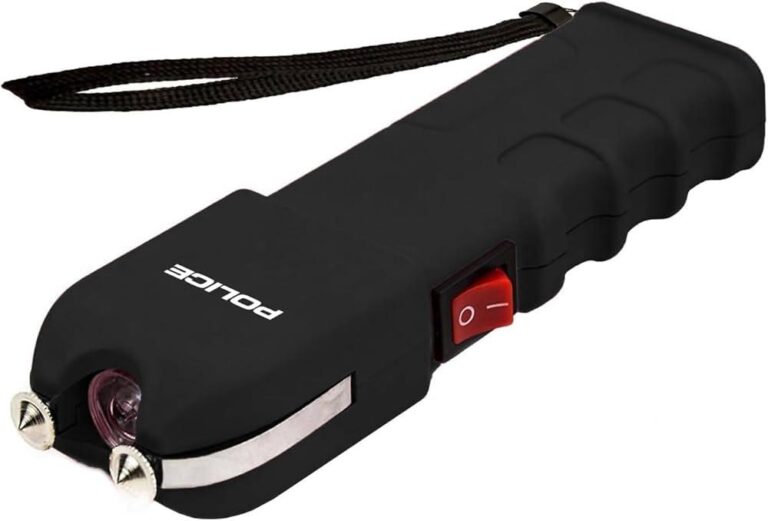Table of Contents
- What to Communicate to De-escalate Before Deploying a Stun Gun
- Choosing Words That Assert Control and Confidence in a High-Stress Situation
- How Clear Verbal Warnings Can Deter an Attacker and Protect Your Safety
- Effective Phrases to Buy Crucial Seconds Before Using a Stun Gun
- Future Outlook
What to Communicate to De-escalate Before Deploying a Stun Gun
Before considering the use of a stun gun, it’s crucial to engage verbally in a way that prioritizes safety and de-escalation. Speak calmly, maintain steady eye contact, and adopt an assertive but non-threatening tone. Your goal is to create an opportunity for the aggressor to back down without feeling cornered or provoked. Use clear, concise language that emphasizes your intent to avoid conflict, such as “I don’t want to hurt you, but I need you to stop.” This approach can make the difference between escalating tension and encouraging compliance.
Employing specific phrases and gestures can greatly enhance your chances of peaceful resolution. Consider using unambiguous warnings paired with offers for compromise, for example:
- “Please step back, or I will have to defend myself.”
- “Let’s talk this through before it gets worse.”
- “I’m giving you a chance to stop now.”
By communicating clear boundaries while showing willingness to defuse the situation, you reduce the likelihood of physical confrontation and make the deployment of a stun gun a last resort measure.
Choosing Words That Assert Control and Confidence in a High-Stress Situation
In moments charged with adrenaline, your words carry immense power. Selecting language that reflects control and unwavering confidence can profoundly influence the situation, potentially deterring aggression before force is necessary. Instead of sounding fearful or pleading, use crisp, authoritative statements. This signals to the attacker that you’re prepared and not an easy target, buying crucial seconds to assess and decide your next move. Phrases such as “Back off,” “Stay where you are,” or “I don’t want trouble, but I will defend myself” set a commanding tone quickly. The goal is to manifest a mindset of dominance-not aggression-that disrupts their expectations.
When crafting your verbal response, focus on clear, concise messaging combined with a firm, steady voice. Avoid filler words and hesitation, which can undermine your presence. Remember these key points:
- Use short declarative sentences-brevity reinforces strength.
- Maintain eye contact to project self-assurance.
- Speak at a controlled, measured pace to imply calm readiness.
- Repeat commands or warnings if necessary, ensuring your intent is unmistakable.
How Clear Verbal Warnings Can Deter an Attacker and Protect Your Safety
Clear verbal warnings act as a powerful psychological barrier, often making an attacker rethink their actions before physical confrontation escalates. When you assertively communicate your intent-such as loudly stating, “Stop or I will use this stun gun!”-you establish control over the situation. This direct warning can create doubt and hesitation in the mind of the attacker, signaling that you are aware, prepared, and not an easy target. A strong verbal message serves as a first line of defense, offering a chance to avoid using force while maintaining your safety.
Effective warnings go beyond volume; the choice of words and tone can amplify their impact. Keeping your message clear, concise, and confident helps to:
- Alert potential witnesses or bystanders to the threat
- Demonstrate your readiness to protect yourself
- Potentially startle or intimidate the attacker into backing off
- Establish a boundary that the attacker must respect
Remember, your voice is a critical tool in self-defense. Using it assertively can change the course of an encounter and protect you without needing to resort immediately to physical deterrents like a stun gun.
Effective Phrases to Buy Crucial Seconds Before Using a Stun Gun
In the split seconds before deploying a stun gun, your words can serve as a crucial buffer-delaying an attacker’s reaction just enough to safeguard yourself effectively. Choose phrases that communicate confidence and caution without escalating the situation. For example, assertive statements like “Stop right there-I don’t want to hurt you.” or “Back off or I’ll be forced to defend myself.” signal your readiness without provocation. The goal is to establish control and introduce hesitation in the attacker’s mind, buying you precious moments to act.
It’s also effective to use brief, commanding phrases that force a mental pause. Simple but firm warnings such as:
- “Don’t make me do this.”
- “I’m warning you.”
- “This will hurt you more.”
These statements act as psychological barriers-making the attacker reconsider their intentions. Keep your tone steady and your body language assertive. When combined, these verbal techniques can be the difference between self-protection and escalation, helping you maintain the upper hand in a dangerous moment.
Future Outlook
In conclusion, knowing what to say to an attacker before using a stun gun can make a significant difference in a high-stress situation. Clear, assertive communication may help de-escalate tension or buy you valuable seconds to defend yourself effectively. Remember, your safety is the priority-use your words confidently to establish boundaries, but be prepared to act swiftly if the threat persists. Stay informed, stay vigilant, and always trust your instincts. Empower yourself with knowledge and preparation to face any encounter with greater confidence and control.Check Our Other Blogs
- StunGun – Your Trusted Source for Stun Guns, Laws, and Self-Defense Tips
- PepperSprayLaws – Your Trusted Resource for Pepper Spray Information
- StunGunLaws – Your Trusted Guide to Stun Gun Legality and Safety





